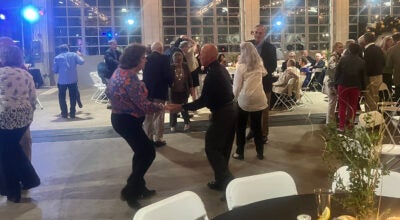Crew not afraid to get dirty in the dark
Published 12:00 am Tuesday, December 1, 2009
By Mark Wineka
mwineka@salisburypost.com
Dennis Presnell and his two-man crew spend most of their time crawling under houses in spaces less than 3 feet high.
It’s not for people with bad backs.
Presnell’s Salisbury business, From the Ground Up, makes crawl spaces airtight.
When he’s done, the encapsulated, waterproof environment with its silver insulation and white vapor barrier on the floor transforms the crawl spaces into places where it seems men with lab coats should work.
“Doing this before the house is built is almost four times easier,” Presnell says, hunched down in the crawl space of a new house for sale in Country Club Hills.
Most of his homebuilder clients ó contractors Tom Rollins, Reid Link and Ken Jones are among them ó invest in his conditioned crawl space technology to protect the hardwood floors they’re putting in most of today’s houses.
The extra cost runs about $2 to $2.25 a square foot of crawl space on new homes.
But Presnell also retrofits many homes after owners contact him about a moisture problem. Retrofitting costs more, from $3 to $5 a square foot depending on the job.
He recently worked on an older home in Country Club Hills after the owners learned water underneath their house was potentially damaging the foundation. Most homeowners don’t realize they have a problem until someone with a pest control or heating and air-conditioning company points it out to them.
At this particular home, mold was growing and a band wall appeared to be rotting because of water penetration along one wall.
Presnell says other indications might be when a home’s hardwood floors are cupping or expanding because moisture is increasing the size of the wood.
One of his customers noticed, for example, an excessive amount of bounce in his floor. When Presnell examined underneath the house, he spotted seven rotting floor joists.
Another clue might be when someone with mold allergies is feeling sick in his own home, Presnell says.
On older homes, the exterior French drain often fails, allowing water to penetrate the foundation into the crawl space. Part of Presnell’s work often involves installing new exterior and/or interior French drains, giving water some place to go.
Presnell says managing the moisture underneath a house makes wood more dimensionally stable, mold can’t grow without at least 70 percent humidity and controlling the moisture also serves as an insect deterrent.
Studies also have shown that heating and cooling costs can be reduced 15 to 18 percent and, in a less humid environment, a home’s mechanicals last longer, Presnell claims.
“Closed” or “conditioned” crawl spaces fit nicely with green building technology, he adds.
From the Ground Up stops moisture from entering through the exterior foundation vents and controls soil moisture.
By stopping the heat and cold at the foundation walls, Presnell says, it allows the earth’s 52-degree temperature to assist in regulating the crawl space and home’s environment.
“Especially in the winter, clients notice warmer floors,” Presnell says. “The biggest savings come in the summer months. The air-conditioning doesn’t work as hard.”
In the retrofit job in Country Club Hills, Presnell introduced some conditioned air into the crawl space and also installed a dehumidifier for additional moisture control.
His crew insulated the foundation walls, sealed the crawl space from all outside moisture penetration, cleaned mold from walls and wood, removed mold-infiltrated insulation, waterproofed the exterior and installed a partial French drain.
An engineer by training, Presnell was working a couple of years ago in the construction business when he learned of Advanced Energy research done on closed or conditioned crawl space. Other terms used are “sealed” or “encapsulated.”
The research made sense to Presnell. The traditional or “old school” thinking, he said, believes the crawl spaces under homes should have air vents along the foundation to allow for cross ventilation, keeping things dry.
But Presnell contends it’s more efficient and prevents moisture problems later by controlling the ecosystem under the house through the closed and conditioned approach.
“It becomes very airtight,” he says.
The From the Ground Up crew confronts its share of spiders, crickets, ants and other creatures underneath the homes. The men often have to move things stored in the crawl spaces, and the job can be pretty dirty.
With some older houses, it’s even claustrophobic.
Presnell says the building code only requires 18 inches of crawl space under a house.
“We call them skitter spaces in our little world,” Presnell says. “All you can do is get on your belly and crawl around.”
For more information on From the Ground Up, contact Presnell at 704-645-9880, or visit his Web site at www.FromTheGroundUpNC.com.




